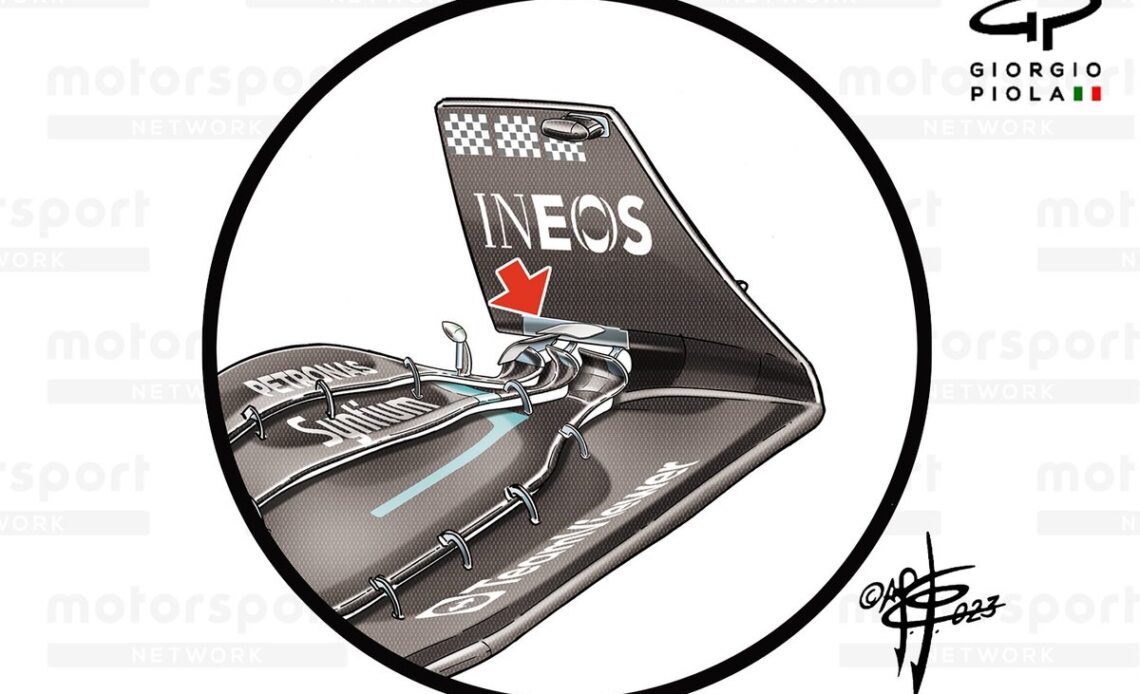Factors that had limited this in the past were viewed as the outwash – the flow of air coming from the trailing edge of a wing – generated by the front wing, plus the various tricks employed with the front brake ducts and axle.
This was why F1 chiefs and the FIA put a great deal of effort in to ensure that the regulations were pretty robust in these areas.
A soft launch of these ideas was carried out as an interim measure in 2019, with some of the more complex surface geometries, cascades and winglets stripped from the outer portion of the front wing. Blown axles were also banned.
And, while the 2022 regulation changes went several steps further, teams are simply not going to relinquish the power these areas commanded.
Furthermore, even if the intent of the regulations in improving the racing is sound, teams have no obligation to follow what’s intended. Instead, their remit is to increase the performance of their cars, while staying within the bounds of the regulations.
One such example of this was the introduction of a new concept by Mercedes at the Miami Grand Prix in 2022 (inset, below).
The Silver Arrows had looked at the regulations and realised that there was an opportunity to expose the rear lower half of the endplate if they contorted the front wing flap’s tip section.
In order to do this, the upper two flaps were angled back on themselves and joined the endplate much further forward than the regulations had intended.
Mercedes W14 front wing
Photo by: Giorgio Piola
Of course, the solution might not be as potent when compared with the designs seen prior to 2022.
However, it’s surely something that’s worth having for the teams if it can generate more outwash. That’s why there’s still a push to create the effect, even if it’s been diminished by the regulation changes.
It’s no wonder then that Mercedes has found a way to circumvent changes put in place by the FIA to this year’s regulations, as the W14 sports a similar concept.
Rather than have the flap’s wing tips angled back on themselves, they are now detached from the endplate, save for some slender metal brackets.
This allows the tip section of each flap, which now includes the flap ahead too, to be shaped with a more precise aerodynamic intent, as a stream of vortices will likely be shed from each of these surfaces.
Add to this that there are two winglets that sprout from the endplate too, both of which face down toward the wing tips.
With the rearward one actually…
Click Here to Read the Full Original Article at Motorsport.com – Formula 1 – Stories…

